Real Property Report - California, October 2015
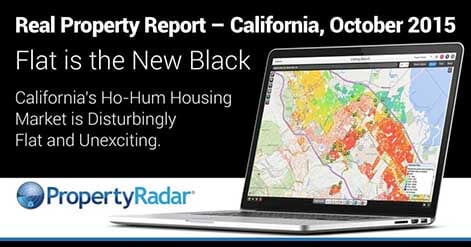
Flat is the New Black
California's Ho-Hum Housing Market is Disturbingly Flat and Unexciting
CALIFORNIA, NOVEMBER 18, 2015 – Seasonal forces continued to exert downward pressure on the sales of California single-family homes and condominiums. October sales fell 2.9 percent to 35,182 from a revised 36,232 in September.
On a year-ago basis, sales were down 1.0 percent from 35,541 in October 2014. October 2014 had one extra sales day than October 2015, and if you remove that extra day then sales were essentially unchanged.
Year-to-date sales through October 2015 were up 6.5 percent compared to the same period in 2014 buoyed by strong sales in the first half of the year. Despite the increase, sales remain 30 to 40 percent below 2002 through 2006 sales volumes.
“Flat is the new black,” said Madeline Schnapp, Director of Economic Research for PropertyRadar. “Sales posted healthy increases in the first half of 2015 relative to 2014 but beginning in July, sales weakened as rising prices began to meet resistance from prospective buyers. That scenario is unlikely to change anytime soon.”
"The California real estate market has been surprisingly resilient," continued Schnapp. "Sales while weak historically, remain higher than we’d expect given limited inventory. Prices are higher than we’d expect given virtually no wage growth. Despite a terrifying drought and financial and stock market volatility, things are quite stable, if not flat out boring. Where would we be without foreign investors and money flowing in to wage growth for a few of the unicorns of the tech industry?”
The median price of a California home in October was $407,500, nearly unchanged from a revised $407,000 in September. Prices peaked in July at $416,000 but have retreated to April 2015 levels.
“On a monthly basis, prices have fallen in 17 of California’s 26 counties,” said Schnapp. “Rapid price appreciation seen in the first half of the year has fizzled in all but a few of the most affluent counties.”
The counties with the largest price increases were Marin (+11.1 percent), Monterey (+5.7 percent), Merced (+2.4 percent) and Stanislaus (+2.0 percent). The counties with the largest price declines were Contra Costa (-5.1 percent), San Mateo (-4.7 percent), Santa Barbara (-13.6 percent) and Santa Clara (-4.3 percent).
On an annual basis prices are still appreciating but at a sluggish pace. On a year-over-year basis, the median price of a California home was up 4.9 percent from $388,500 in October 2014, down from an annual increase of 7.0 percent in October 2014, and 25.2 percent in October 2013.
Annual price gains were five percent or less in 12 of California’s 26 counties. Of those 12 counties, six experienced annual price declines up from three in September and one in August.
“Price appreciation has definitely slowed,” said Schnapp. “As we transition into the fall and winter selling season, buyers have become more cautious and sellers more negotiable.”
In October, only 6.2 percent, or almost 545,000, of California’s homeowners were underwater, down from 1.2 million in October 2014.
“What a difference a year makes,” said Schnapp. “In October 2014, one in eight homeowners were underwater, today that number has dropped to one in 16. That’s half a million homeowners headed into this year’s holidays without the stress of being underwater.”
In October, Foreclosure Notices of Default and Notices of Trustee Sale jumped 8.1 percent and 8.8 percent, respectively. Foreclosure sales were nearly unchanged.
“It is quite possible that banks are becoming more aggressive in unloading their distressed properties via a Trustee Sale before year’s end,” said Schnapp. “While the one month jump in October does not make a trend, the potential for an increase in distressed properties for sale is good news for investors.”
In other California housing news:
- Flip sales fell 1.8 percent in October but were up 2.3 percent over the past 12 months. Flip sales peaked in June, coincident with a peak in median prices. As price appreciation slows, flip sales are also slowing.
- Cash sales fell 1.5 percent in October to 7,400 and represented 21.0 percent of total sales up 0.3 percent from 20.7 percent of total sales in September. Cash sales as a percentage of total sales remain elevated but have been steadily declining since reaching a peak of 40.0 percent of total sales in August 2011.
- Institutional Investor (LLC and LP entities) purchases fell 3.2 percent to 1,286 during the month of October and were down 1.3 percent from October 2014. Since reaching a peak in December 2012, institutional investor demand has declined 44.7 percent.
- Trustee Sale purchases by LLC and LPs were down 82.9 percent from their October 2012 peak but have trended mostly sideways since May 2014.
- Institutional Investor sales were nearly unchanged for the month and down 19.5 percent from October 2014. Investor sales have been on a downward trend since March 2015.
Home Sales
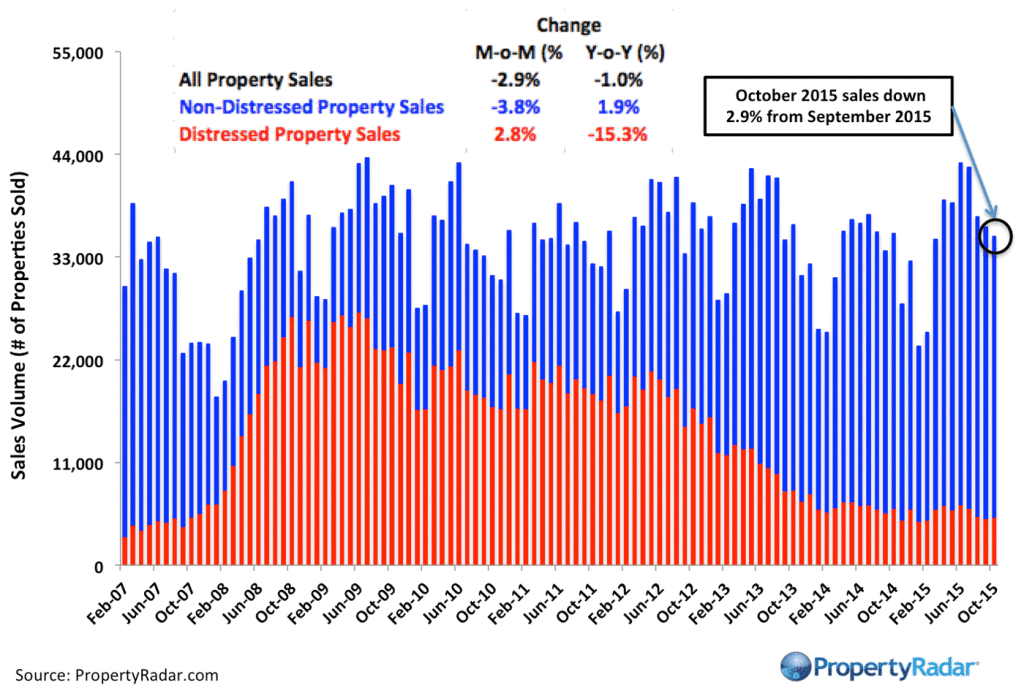
Home Sales - Single-family residence and condominium sales by month from 2007 to current divided into distressed and non-distressed sales. Distressed sales are the sum of short sales, where the home is sold for less than the amount owed, and REO sales, where banks resell homes that they took ownership of after foreclosure. All other sales are considered non-distressed.
Year-over-Year Home Sales
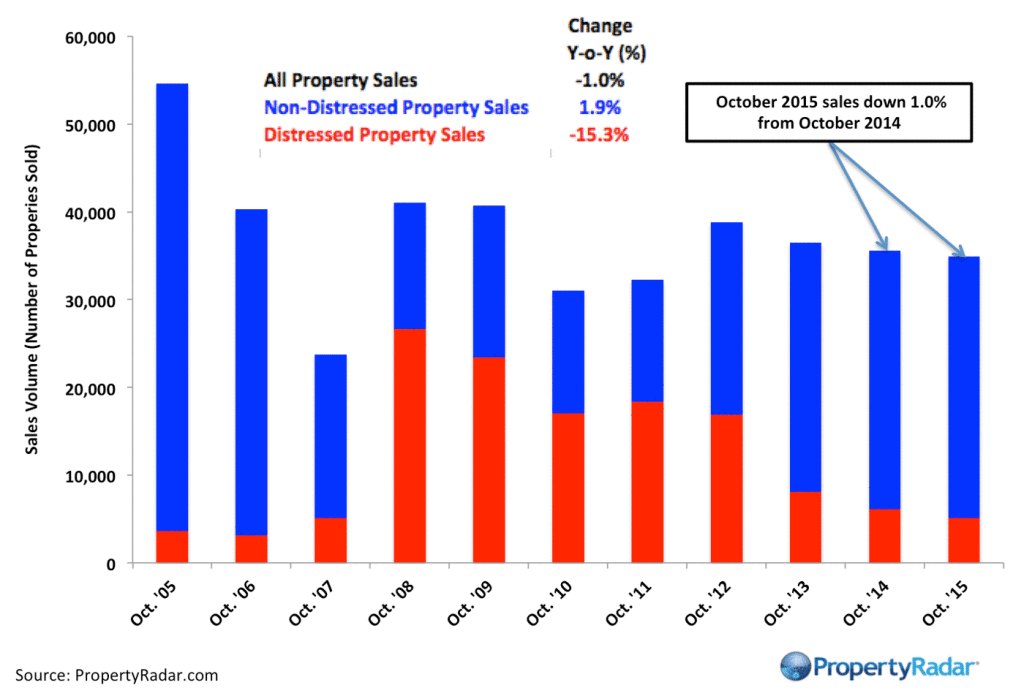
Year-over-Year Home Sales Year-over-Year Home Sales - Single-family residences and condominiums sold during the same month for the current year and prior years divided into distressed and non-distressed sales.
Median Sales Prices vs. Sales Volume
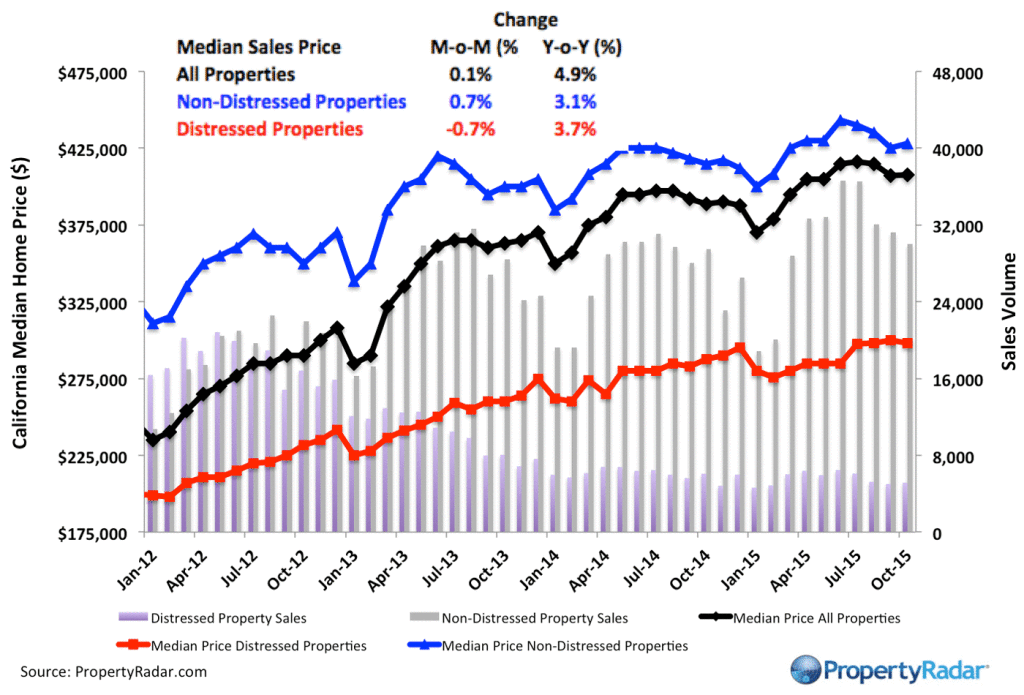
Median Sales Price vs. Sales Volume - Median sales price (left axis) of a California single family home versus sales volume (right axis), by month from 2012 to current. Median sales prices are divided into three categories: All single-family homes (black line), distressed properties (red line), and non-distressed properties (blue line). Monthly sales volumes (right axis) are illustrated as gray and lavender bars. The gray bars are distressed sales and the lavender bars are non-distressed sales.
California Homeowner Equity
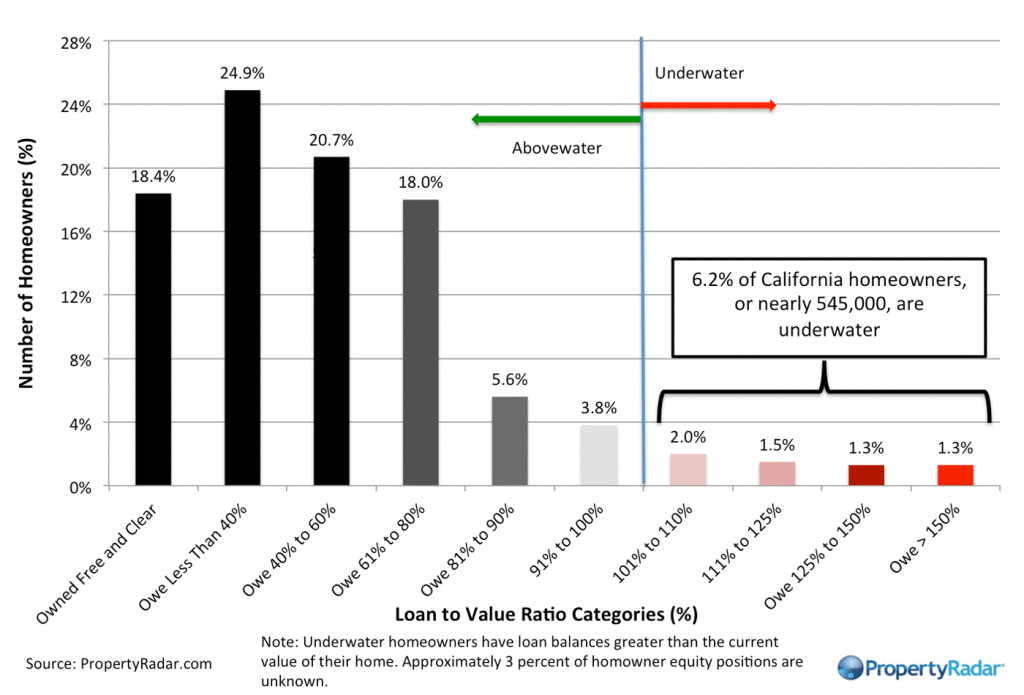
California Home Owner Equity - A model estimate of California homeowners segregated into various categories of levels of homeowner equity for a given month. Homeowner numbers represent a percentage of total California homeowners.
Cash Sales
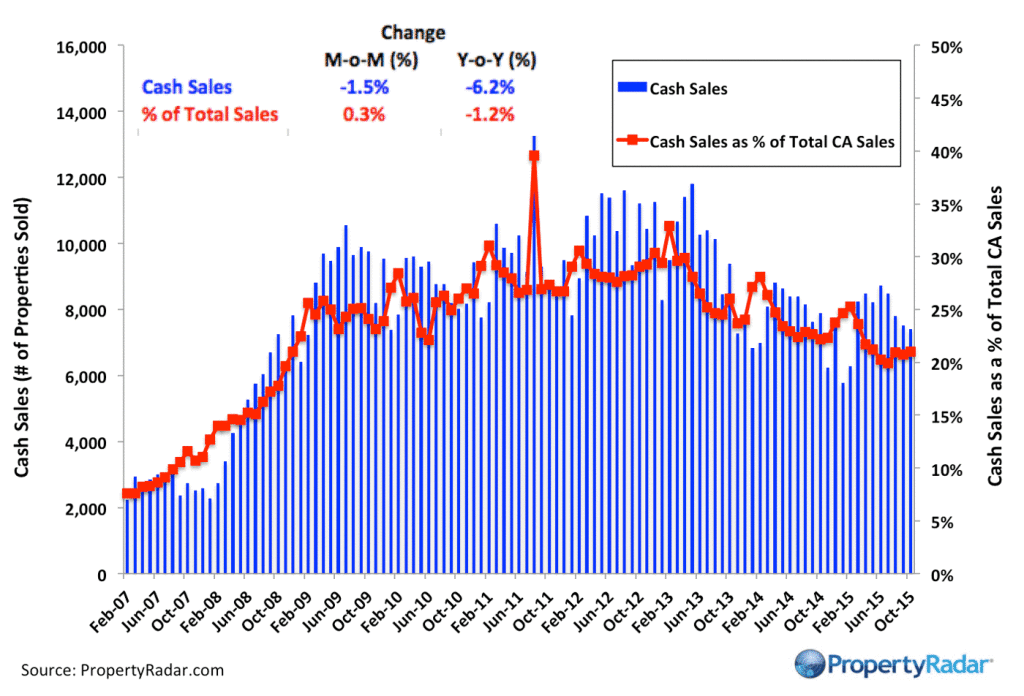
Cash Sales - The blue bars (right axis) illustrate cash sales of single-family residences and condominiums by month. The red line (left axis) illustrates cash sales as a percentage of total sales by month.
Flipping
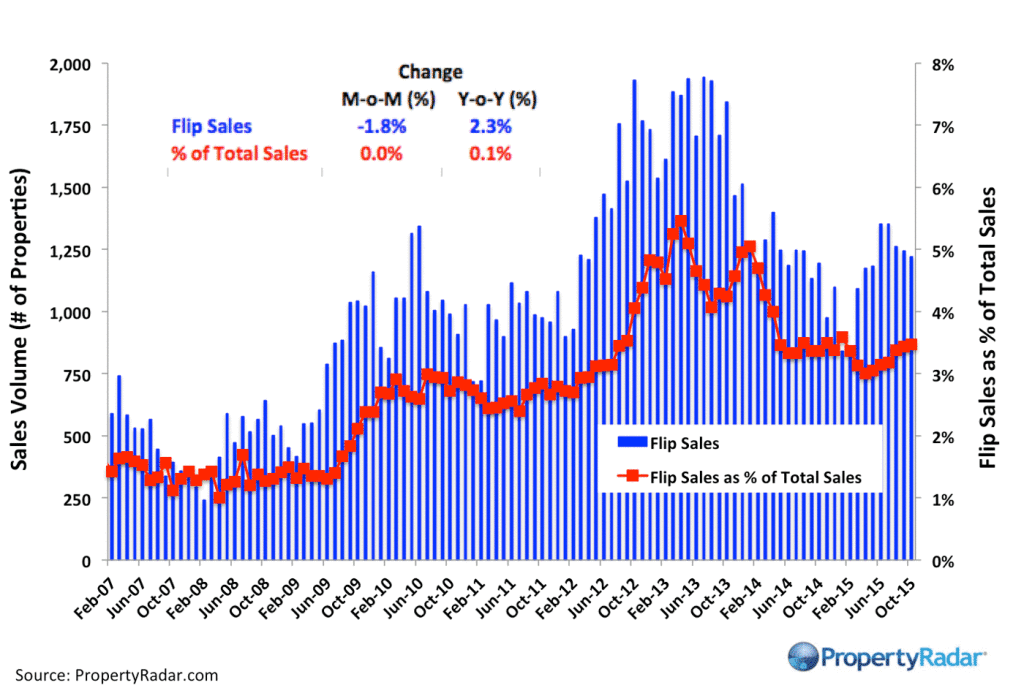
Flipping – The number of single-family residences and condominiums resold within six months.
Market Purchases by LLCs and LPs
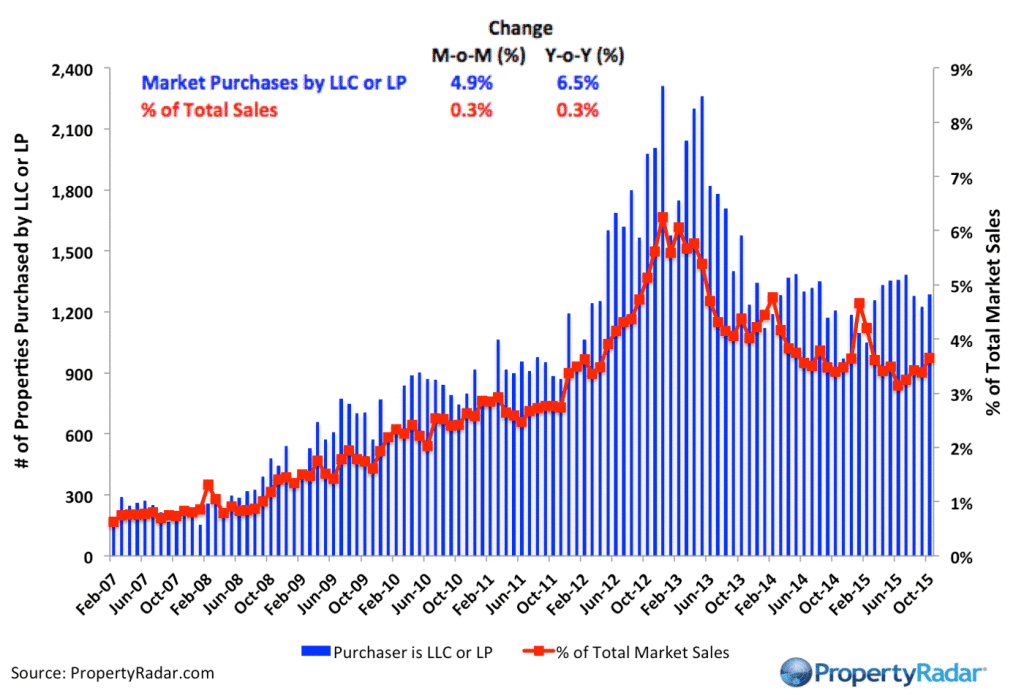
Market Purchases by LLCs and LPs - The blue bars (right axis) illustrate market purchases of single-family residences and condominiums by LLCs and LPs from 2007 to current. The red line graph (left axis) illustrates LLC and LP purchases as a percentage of total sales by month.
Market Sales by LLCs and LPs
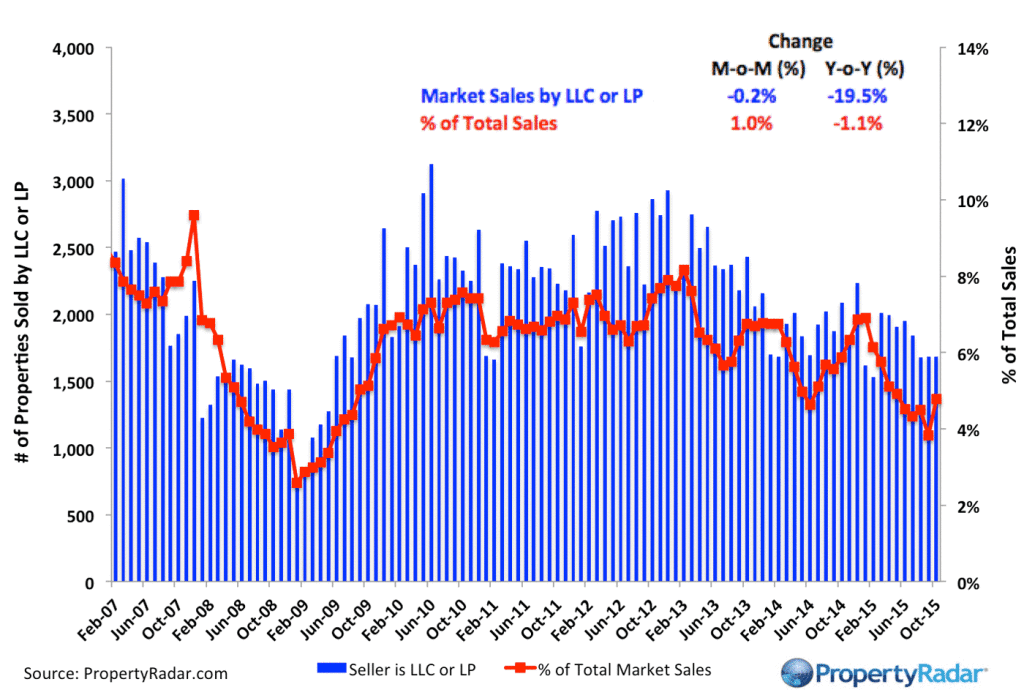
Market Sales by LLCs and LPs - The blue bars (right axis) illustrate market sales by LLCs and LPs of single-family residences and condominiums by month. The red line graph (left axis) illustrates sales as a percentage of total sales by month.
Trustee Sale Purchases by LLCs and LPs
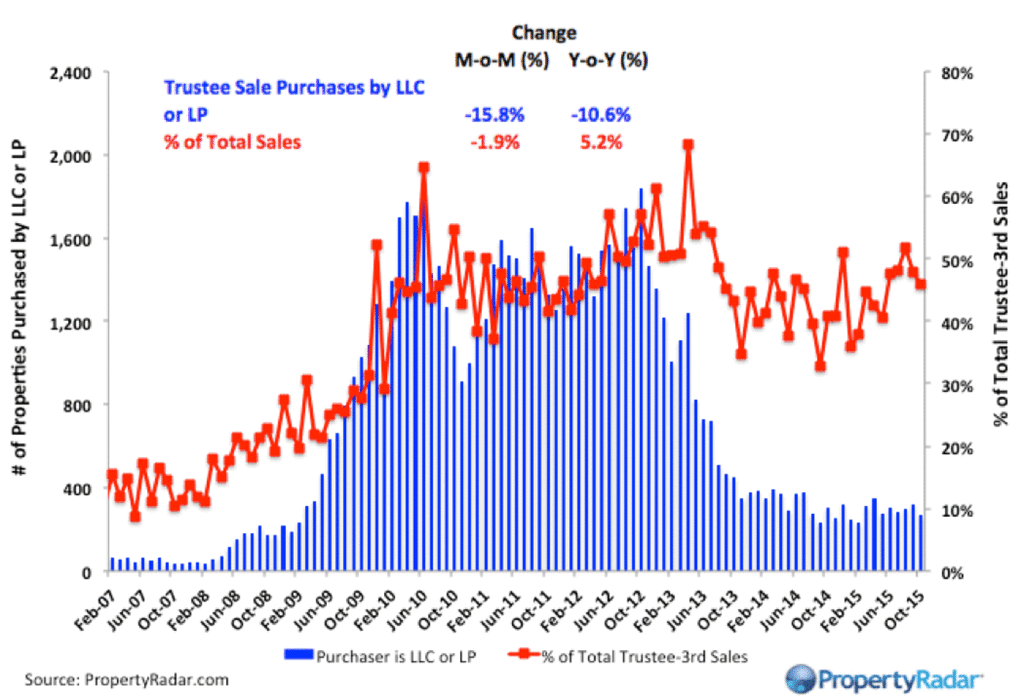
Trustee Sale Purchases by LLCs and LPs - The blue bars (right axis) illustrate trustee sale purchases (foreclosure sales) of single-family residences and condominiums by LLCs and LPs from 2007 to current. The red line graph (left axis) illustrates purchases as a percentage of total trustee sales by month.
Foreclosure Notices and Sales
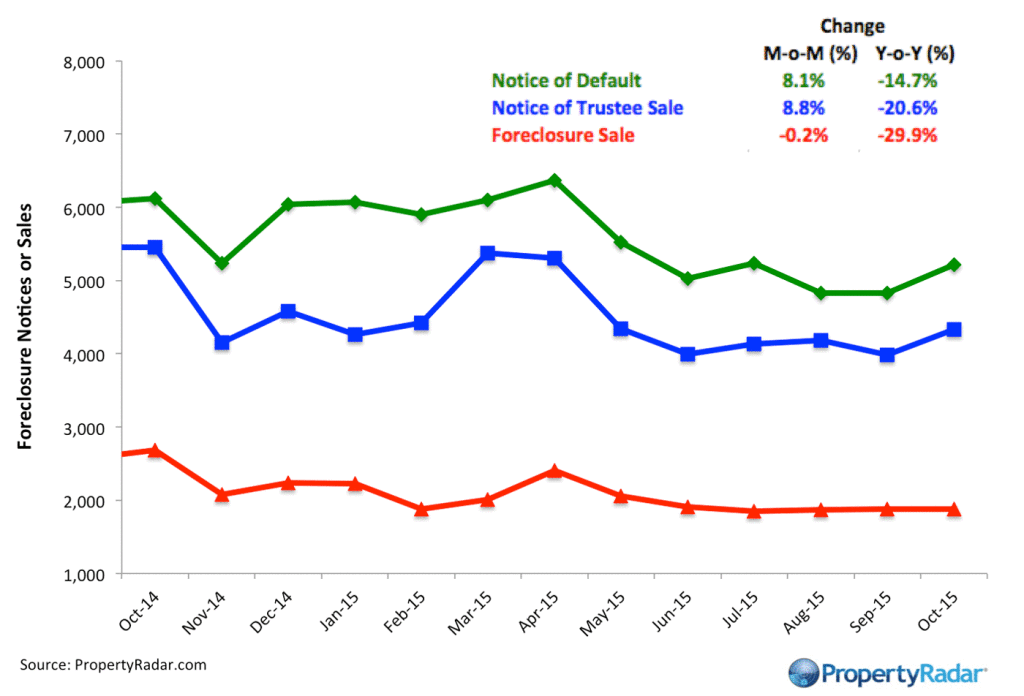
Foreclosure Notices and Sales - Properties that have received foreclosure notices — Notice of Default (green) or Notice of Trustee Sale (blue) — or have been sold at a foreclosure auction (red) by month.
Foreclosure Inventories
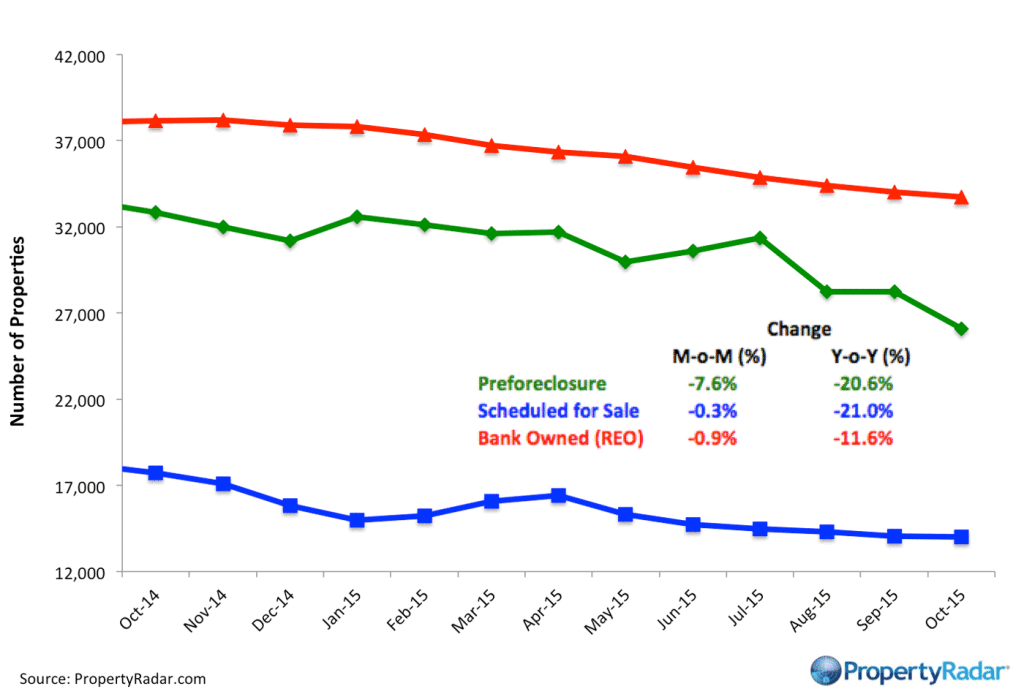
Foreclosure Inventory - Preforeclosure inventory estimates the number of properties that have had a Notice of Default filed against them but have not been Scheduled for Sale, by month. Scheduled for Sale inventory represents properties that have had a Notice of Trustee Sale filed but have not yet been sold or had the sale cancelled, by month. Bank-Owned (REO) inventory means properties sold Back to the Bank at the trustee sale and the bank has not resold to another party, by month.
Real Property Report Methodology
California real estate data presented by PropertyRadar, including analysis, charts and graphs, is based upon public county records and daily trustee sale (foreclosure auction) results. Items are reported as of the date the event occurred or was recorded with the California County. If a county has not reported complete data by the publication date, we may estimate the missing data, though only if the missing data is believed to be 10 percent or less.


